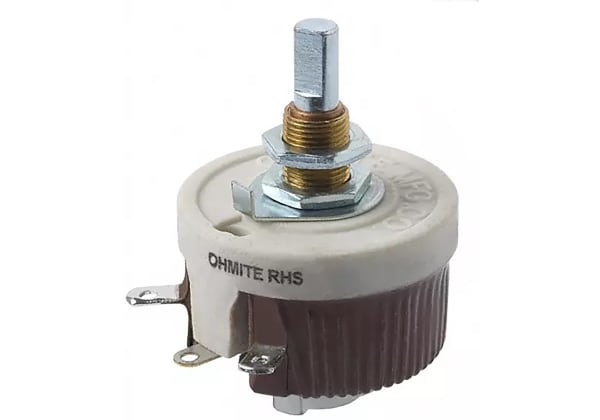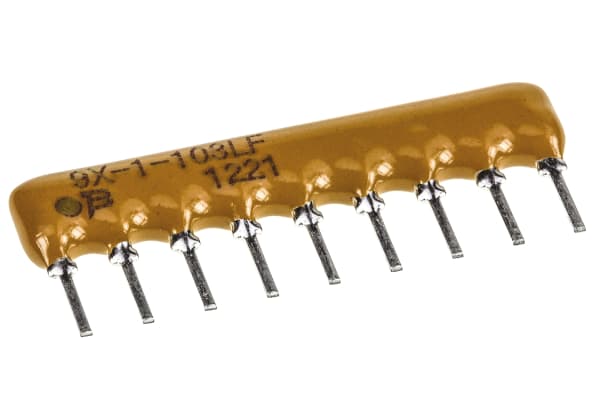- Published 19 Sept 2025
- Last Modified 19 Sept 2025
- 7 min
Strategies for EMI Shielding & Protection in Biotech
Learn about EMI shielding and protection strategies, and how they ensure accuracy and reliability in the field of biotechnology.

Clean, reliable data signals are a key aspect of biotechnology, which covers many crucial aspects of our lives: healthcare, food production, environmental monitoring, and laboratory testing. A hazard that all these face in their data collection is electromagnetic interference (EMI): electromagnetic signals that interfere with electronic instruments properly receiving their data signals. EMI in biotechnology primarily comes from other nearby electronic devices and signals like Wi-Fi or Bluetooth, but it also occurs naturally in lightning and solar flares. Biotechnology devices thus need EMI protection built in to ensure data accuracy and reliability.
The Critical Risks of EMI in Biotechnology
- Lower signal-to-noise ratio: With more EMI noise in the signals biosensors process, it gets more difficult to detect the actual desired signals, which can be very faint (especially signals from the bodies of people on life support)
- Uncertain measurements: EMI introduces errors to the data that biosensors collect, reducing their effective accuracy and precision and making their data unreliable
- Reduced instrument sensitivity: EMI can send false signals to biosensors and the properties of the biomaterials that biosensors monitor, resulting in false positives and false negatives
Medical devices must detect data critical to patient safety and can themselves generate significant EMI, as with the inherent large magnetic fields of MRI machines. These devices also often operate near each other, and alongside the many other signals and electronic devices in hospitals, so EMI protection is essential. Medical implant devices need very robust EMI protection methods given patients’ long-term, nonstop reliance on them, and is compounded for patients with more than one implanted device (since they could interfere with each other).
Biomaterials can be particularly susceptible to EMI. With biosensors that use piezoelectric materials (which produce a charge when subjected to physical force), EMI can alter their resonant frequency and produce signal noise. Conductivity is also key in the emerging field of neural interfaces. These EMI-risking properties are essential for these devices to function, though, so designing them with EMI mitigation is equally essential.
In the laboratory, precise measurements are needed for things like cell culture production. Incubators, refrigerators, and freezers need EMI shielding to maintain their crucial temperature control precision.
Environmental monitoring devices are often in remote locations where EMI from other devices is of low concern. These devices still must have robust EMI shielding against natural EMI sources, like the sun, lightning, storms, and solar flares. We rely every day on the data they collect, as with weather, air quality, and water levels - we need this data to be accurate and always available.
In the field of food safety, EMI protection is crucial for metal detectors that inspect food. The EMI from the myriad other electronic machines in food production can make these detectors both fail to spot metal and have false detections, respectively causing food safety risks and food waste.
Read on to learn about shielding, grounding, and filtering methods to mitigate these EMI hazards.
EMI Shielding
EMI shielding is a good EMI protection method since it can guard against both radiated EMI (electromagnetic waves travelling through the air) and conducted EMI (travelling physically through connected wires). The goal of EMI shielding is to encase what you want to protect with a conductive shield, which will absorb the unwanted electromagnetic signals, send them to ground, and stop them from affecting the delicate instruments inside the shielding—or, to internally absorb the EMI the device generates, thus preventing it from negatively affecting other devices.
Here are some examples of EMI shielding in biotech:
- Shielded cables and cable connectors: For any non-portable biotechnology, especially with wired data connections, using power and data cables with EMI shielding is an effective way to keep crucial data reliable and transmit it successfully
- Metal enclosure shields: Also known as Faraday cages, these metal sheets provide robust EMI protection by making a full conductive barrier around a biotech device’s internals. Aluminium, copper, and nickel are all good metal choices for keeping EMI out (or in). These shields are well-suited for major medical devices, like infusion pumps and ventilators, and food processing instruments like metal detectors.
- EMI-shielding films and tapes: These lightweight shielding materials are good for handheld lab instruments, wearable health monitors, and ruggedised technology for environmental field work
- Conductive seals: Biotechnology often has inspection access points, shielding gaps at cable connection points, and moving joints for positioning around patients. Seals and gaskets made from conductive elastomers bridge these protection gaps effectively and can be cut or moulded to complex shapes.
- EMI-shielding aerosol sprays: These products provide a coating of EMI protection that also helps keep devices antistatic and scratch-resistant. You can apply these sprays to the plastic housing components of medical devices before their final assembly.
EMI Grounding
Grounding is another key pillar of EMI protection. Always ground biosensors to a common zero-voltage reference point to discharge incoming EMI. However, an actual earth ground isn’t necessarily required, as it is with grounding for safety from shock hazards. With EMI grounding, you just need to give the high frequencies of EMI a low-impedance return path to an established zero-voltage point in the system.
When designing for EMI grounding, keep the following in mind:
- Give the device’s internals multiple, short-distance grounding paths to a large ground plane to keep impedance low
- Tailor the grounding conductors to define zero-volt references for the EMI frequencies you want to keep out
- The grounding structure should be separate from any EMI shielding used (such as metal sheets)
- Separate the grounds for analogue and digital signals, both of which can come up in medicine and other biotechnology—analogue electrocardiograms (ECGs), for example, which may also display some digital data like date and time
- Design this grounding to avoid carrying the device’s actual operational currents, which can only further corrupt the signals you do want to detect
These tips help with the design of medical and laboratory equipment, but what about biotechnology implants placed in bodies? Grounding takes a different form in those scenarios: implants are generally surrounded by body tissue and not connected to any mains power, so are considered floating and not referenced to earth ground. The human body does have its own voltage potential, though, so carefully consider any displacements from this for devices interfacing with the nervous system.
EMI Filtering
EMI filtering is another one of the main EMI protection methods, though it only guards against conducted EMI, not both conducted and radiated EMIs as with EMI shielding. You should always pair EMI filters with EMI shields in the device unless the conducted EMI travel path is known to be very short.
EMI filters remove unwanted signals based on their frequency. EMI is typically high-frequency, so EMI filters sort those out and let the desired low-frequency signals through. These filters either send EMI to ground, block it back to its source, or absorb it.
Some examples of EMI filter products and their biotechnology uses are:
- Ferrite beads: Passive devices used in circuit boards that become resistive at the target EMI frequency range and convert the EMI signal’s energy to heat. Given their heat buildup risks, use them with caution in medical and biotechnology devices, since a fire would be disastrous
- Ferrite rings: ‘Doughnut’ shapes of ferrite that attract the magnetic flux of EMI and convert it to heat, which they dissipate. They can be installed over cables or have cables wrapped around them—in all cases, to prevent the cable from effectively becoming an antenna for transmitting and receiving EMI. They can also be either incorporated into the internals of electronics design (as with the large windings in transformers) or installed in-line onto a device’s supply cables. Exercise caution with their heat, though
- Ferrite sleeves: Ferrite rings that easily clamp onto cables. These are very versatile, given that they can be retrofitted onto the power or signal cables for components like monitors, medical devices, and laboratory electronic equipment
- MRI EMI filters: Filters specialised for MRI rooms and surgery rooms, where clean, reliable, uninterrupted instrument data is critical
Software solutions exist for EMI filtering as well. For laboratories, food safety, and other biotech sectors that perform detailed data analysis, machine learning algorithms can sort out EMI noise and identify the actual sought-after data.
Finally, it’s important to design biotechnology circuits efficiently to avoid spikes and transients of voltage and current, and thus minimise EMI generation. You can also deter EMI from reaching signal receivers by designing biotechnology with low-conductivity materials. This is not always possible, though, so a full complement of EMI shielding, thorough grounding, and EMI filtering is essential in biotechnology design.
Browse the RS selection of EMI protection methods today.
Related Articles
Related links
- Shielding Aerosols
- Shielding Strips
- Chemtronics Conductive Lacquer for EMI Shielding, Grounding
- Chemtronics Nickel Conductive Lacquer for EMI Shielding, Grounding
- MG Chemicals Silver Conductive Lacquer for EMI Shielding, Grounding
- RS PRO Copper Earthing Strap for Use with RFI & EMI Shielding, 76.2 x 12.7mm
- RS PRO Copper Earthing Strap for Use with RFI & EMI Shielding, 228.6 x 12.7mm
- Tool Management Strategies for Efficient Maintenance






